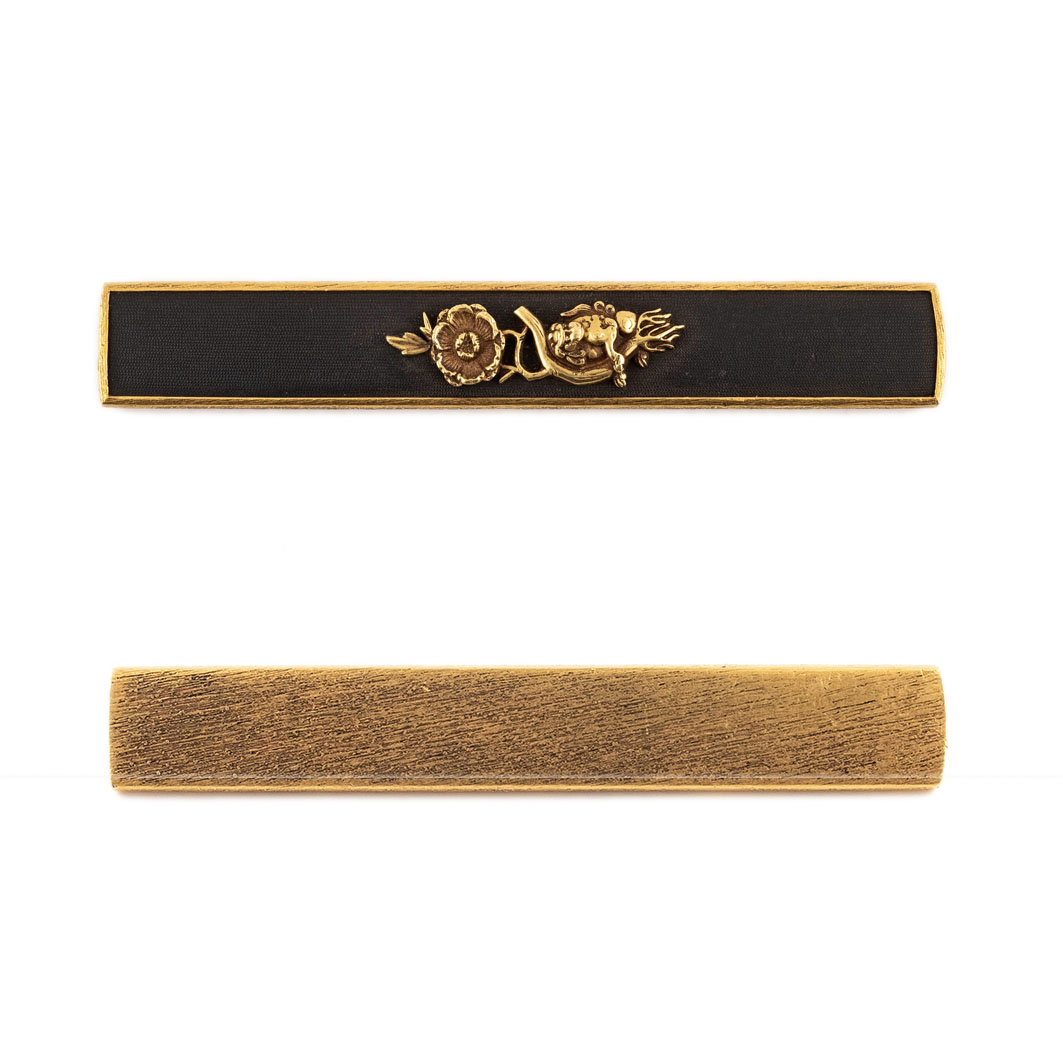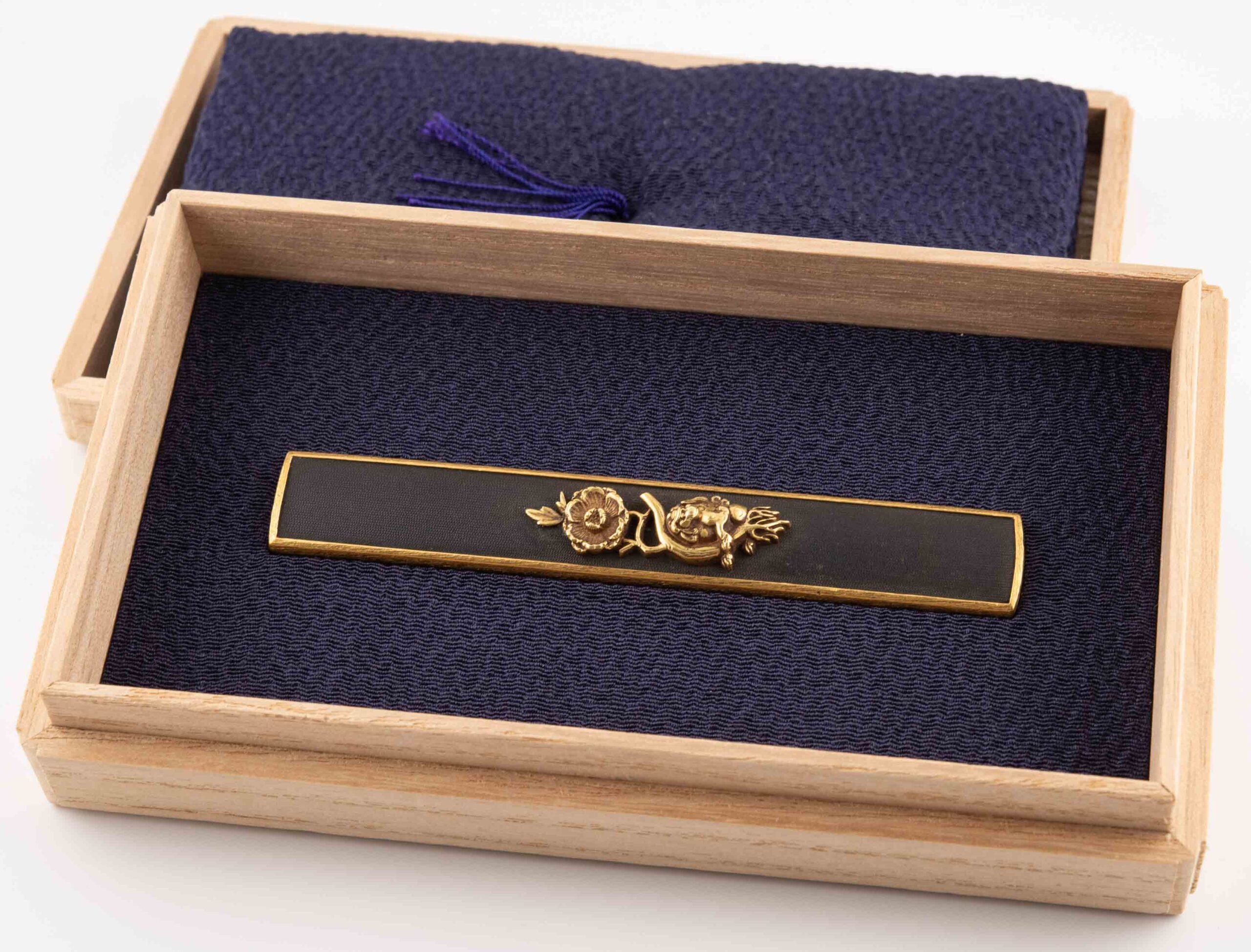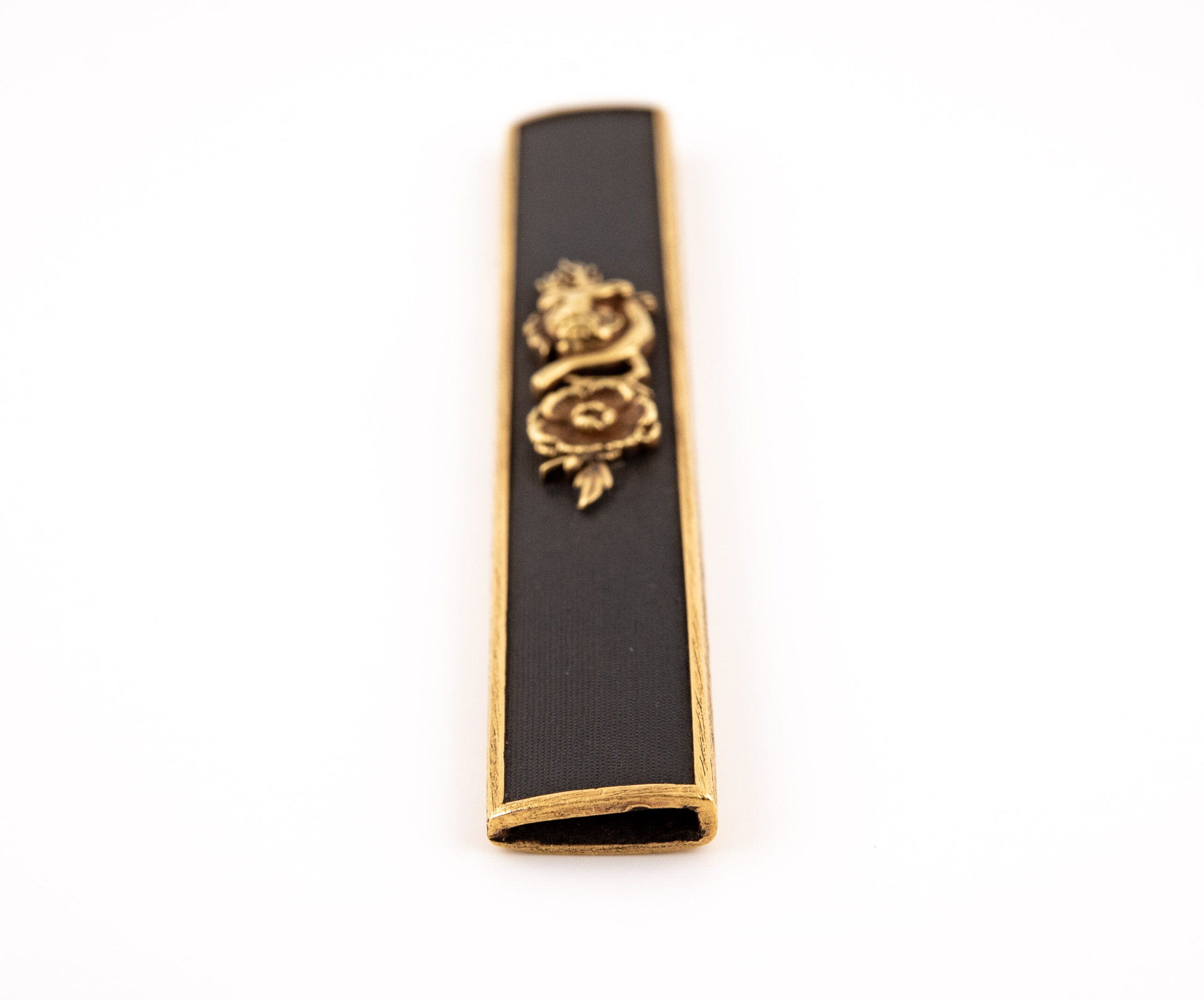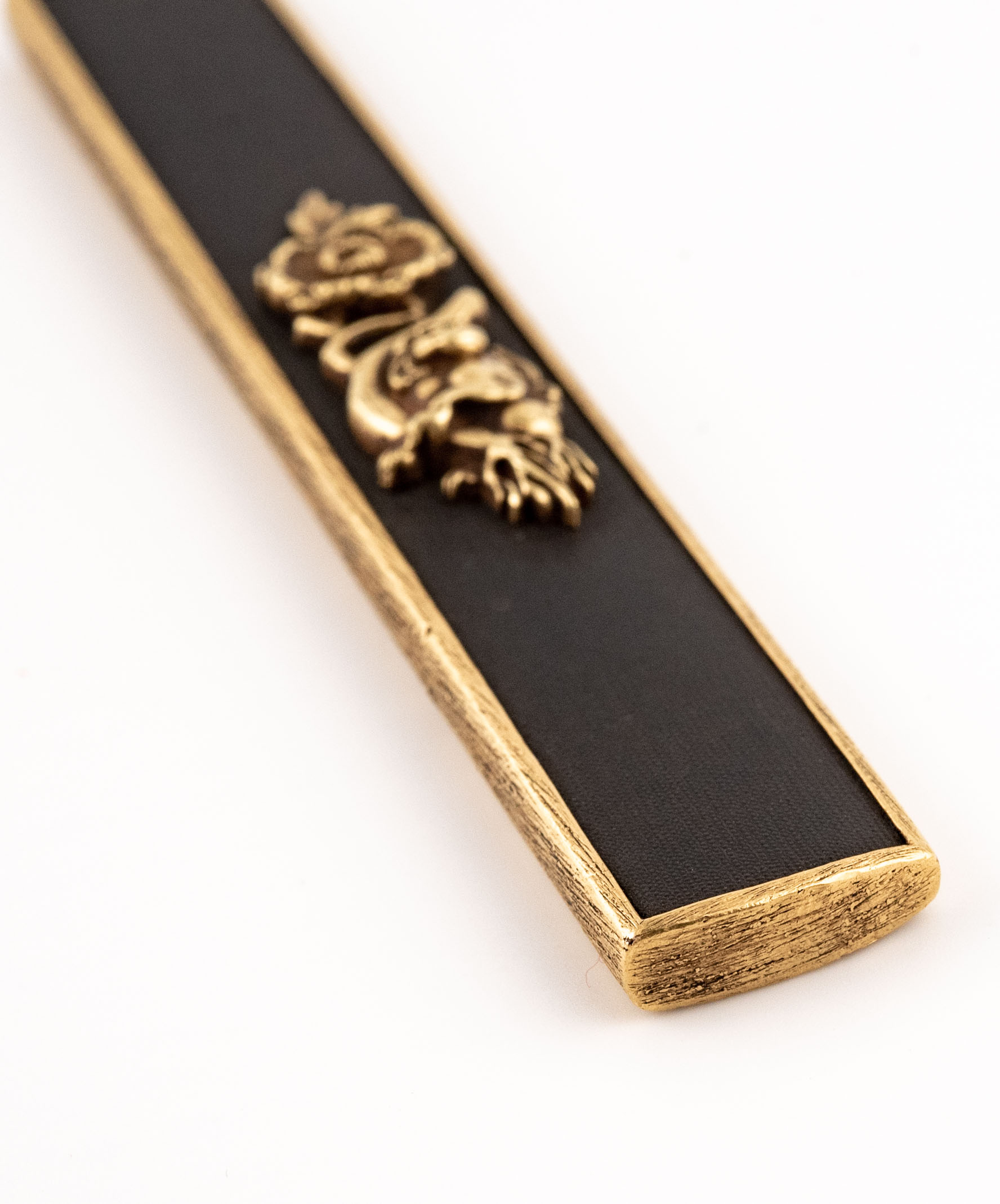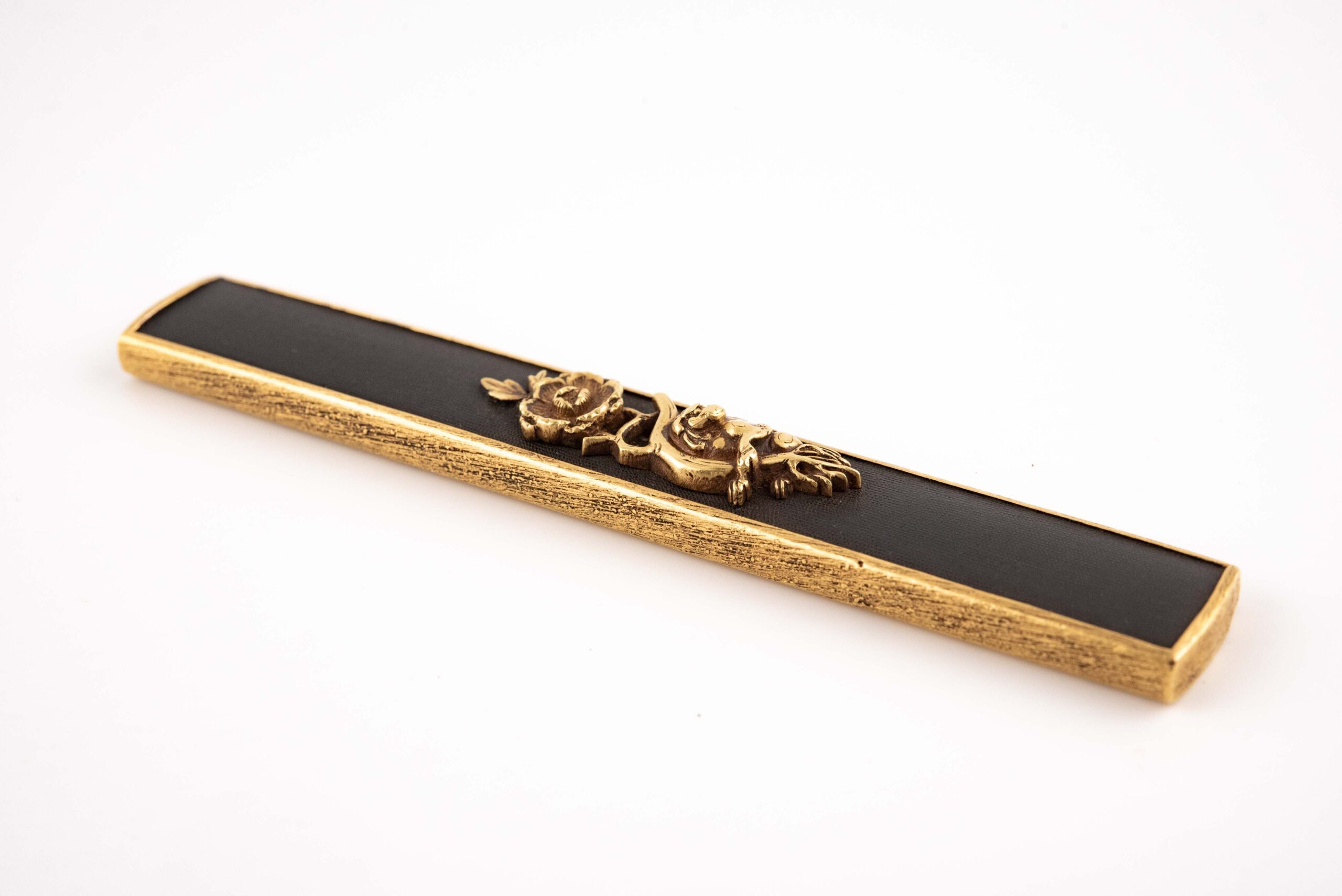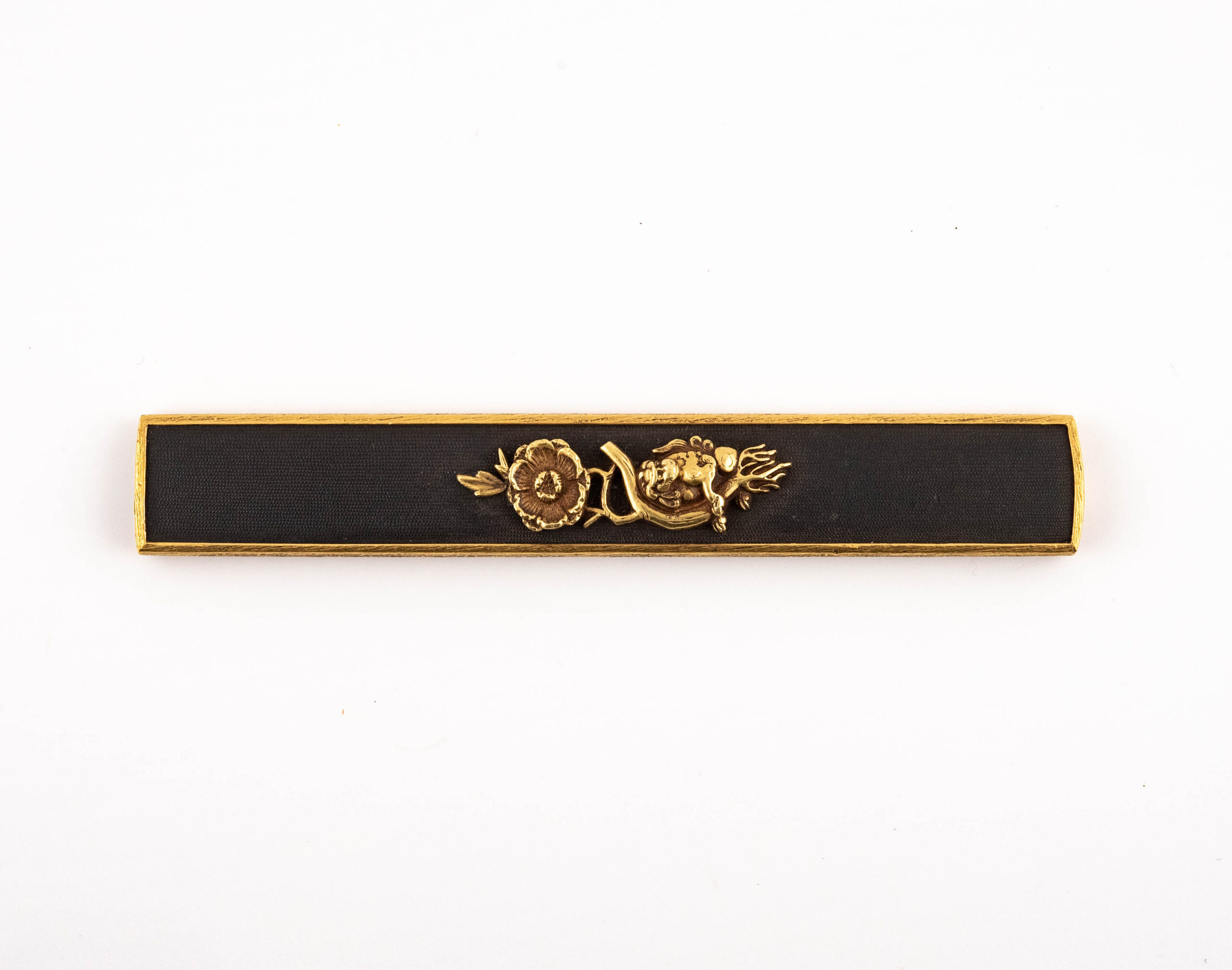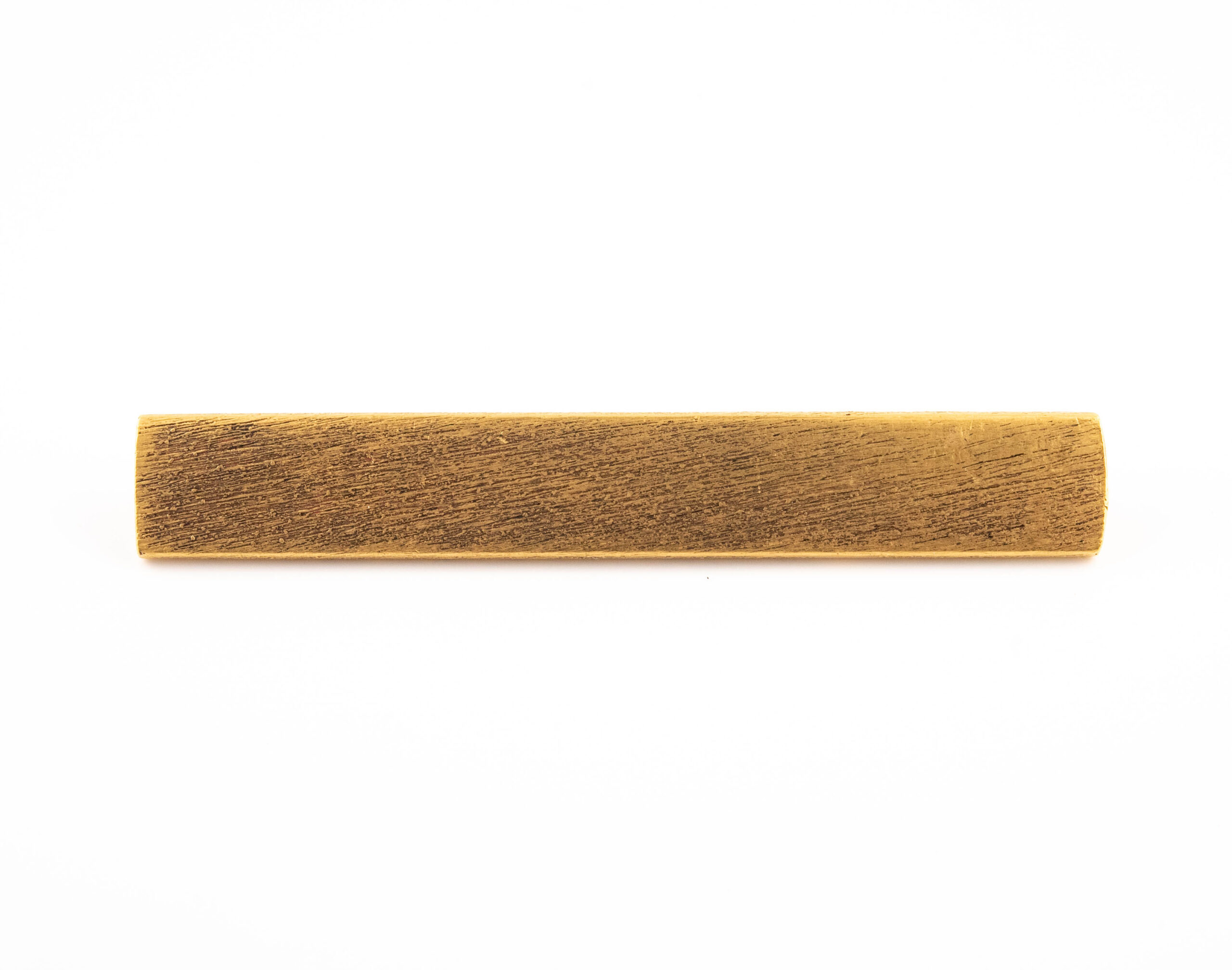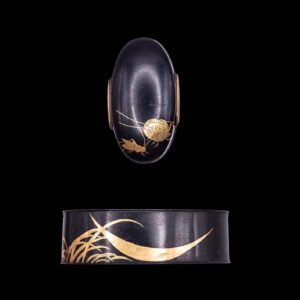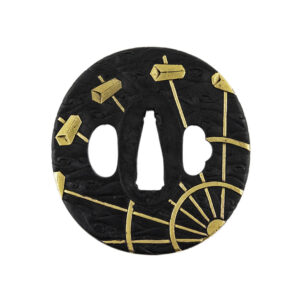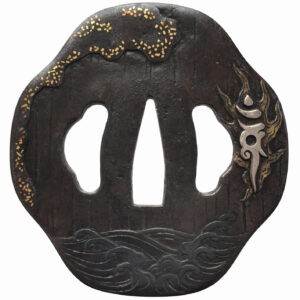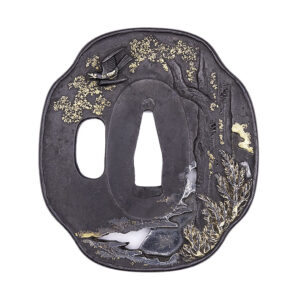We have here a very rare design or rather a rare interpretation of the famous ‘Shishi Botan’, sacred lion and peony design. You can find a detailed explanation of this design in the description of this Tsuba: Yanagawa Tsuba by Naohide, but here we would like to point our focus on the way the artist has depicted this Shishi. While normally you would find the Shishi lying under or next to the peony and created in equal size to the flower, we have here a Shishi who is just small enough to ride the stem of the Peony. He is grabbing the branch with his feet while his hands are hidden, and his head is turned back. We can almost see him putting on a somewhat whimsical smile. Another curiosity is presented by the design of the Peony itself. Where we would normally expect a big flower with some leaves, the Artist has created a branch of the Peony which was pulled out by the roots (in Japanese: Nebiki, ‘Ne’ – roots, ‘hiki’ – pull) and this leads us to some hidden meaning for this design.
It is a common new year’s tradition in Japan to pull out small pine tree saplings by the roots, which represent the emergence of new life. This is also called ‘Komatsubiki’ (‘Komatsu’ – small pine). There used to be an old word play as the word Komatsu sounded like the name of ‘Komachi’ who was a female poet from the ancient times who also was famous for her beauty. Thus Komatsubiki and the design of a the pine sapling with roots carried the hidden meaning of being intimate with a beautiful woman. The same goes for the more general term ‘Nebiki’ as ‘Ne’ (or ‘Ne-san’) could also be understood as the colloquial term to address a woman.
With this meaning in mind we have here a very humorous interpretation of the ‘Shishi Botan’ motif and we might make an educated guess towards the reason of the small Shishi’s whimsical smile.
This Kozuka is attributed to the Kyo-Kinko tradition which is a general term for soft metal work which was made in Kyoto in the early to mid Edo period. The motif was created from pure gold and maybe even made as a menuki which was later put on top of the Shakudo Nanako plate, a common technique in the large Kinko workshops of Kyoto and also often applied by the Goto school. The rim and back is covered with a thick gold foil and decorated with Sujikai Yasurime with Tama. The workmanship dates this piece to roughly 1700.
Due to the rarity of the design and the good preservation condition this piece was awarded Tokubetsu Hozon by the NBTHK and attributed to the Kyo-Kinko tradition.
It comes with a custom made Kiri box.
Dimensions:
9.74 cm x 1.46 cm x 0.48 cm

